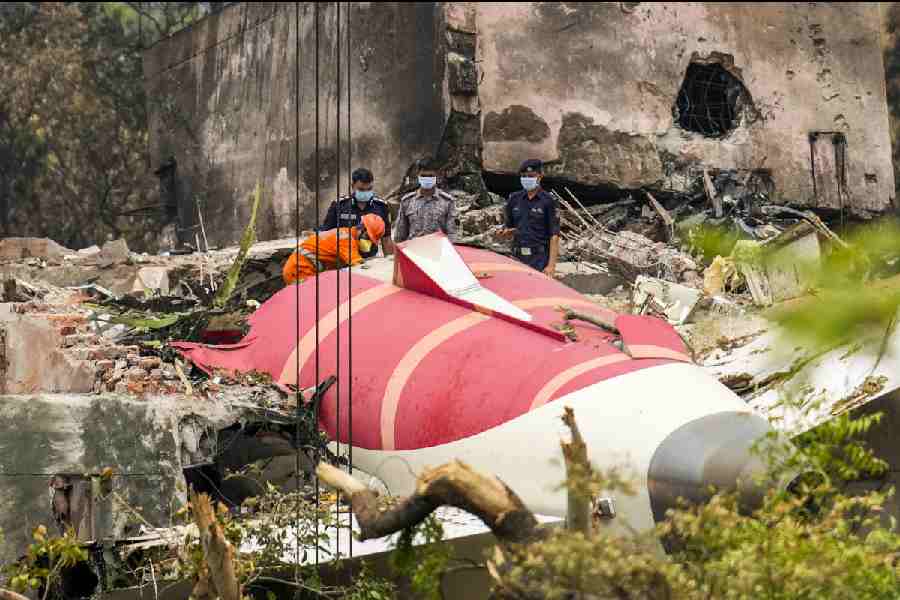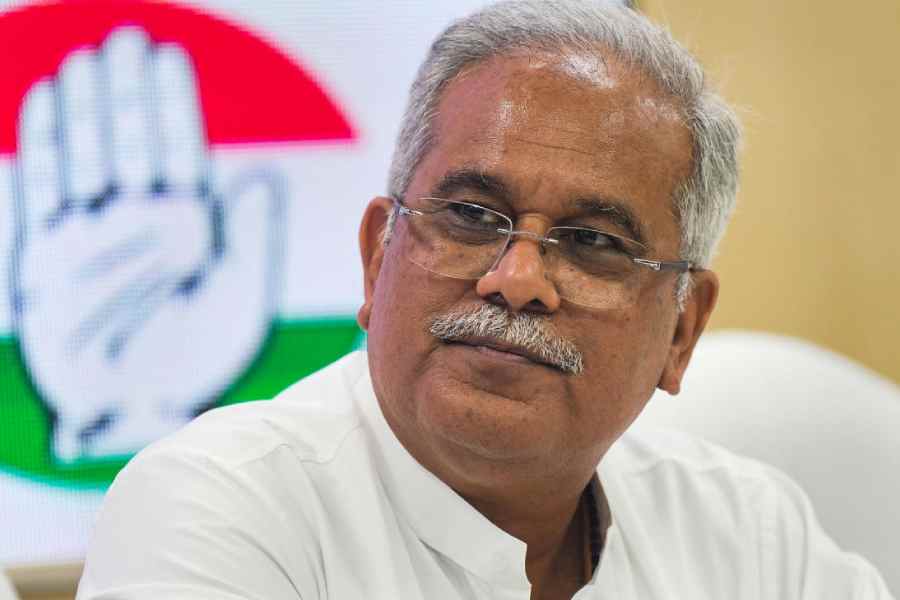 |
| The thermal power plant at Barauni, which is being revamped. Telegraph picture |
Sheep graze indolently and fat bales of paddy lie piled across the flats at Nabinagar in Aurangabad that will make Nitish Kumar’s “naya Bihar” — or break it.
Kingfishers dart for prey in pools and puddles, and along tracks weaving off the highway, they still gape at the arrival of motorised vehicles.
It’s a dare to the imagination to even comprehend the radical surgery being planned on drawing boards in Patna for this bucolic remoteness: a mega state-of-the-art power project that, if and when it is transported here, will look as unlikely in these parts as Alladin’s castle in the Arabian desert. And it will do no less than magic-lamp things to all of the state — 3,300 megawatts of power flowing off just this one BSEB-NTPC venture, more than all the power Bihar generates today.
At the moment, though, the Nabinangar power project is less a prospect of fancy magic, more a thing of chimera. It is looped in a flaring row over land acquisition which, at least critics of the government wish, can be twisted into the Bihar chapter of Nandigram and Singur.
“This is nothing short of land grab by the government,” says the RJD’s Lalu Prasad, “farmers are being deprived of their land and livelihood, we will oppose that tooth and nail.”
His successor and chief minister, Nitish Kumar, tears into such rhetoric with gritted-teeth anger. “This is not land being acquired so some Tata or Birla can profit, this is land being acquired so that all of Bihar gets power, so that we can begin to change our fortunes. The Opposition is ill-informed and deliberately destructive, it is indulging in disastrous misinformation and we are determined to fight it. Most of the land we have already acquired, the rest we are in the process of, this project is critical to the future of the state and its people.”
At the core of the dispute, which has already seen to violent flashpoints, are a 1,000-odd acres of land, both arable and fallow, around Nabinagar. The government lays claim to most of this acreage, local farmers, who have been tilling it (and therefore demanding tiller’s rights without formal or legal ownership) argue the least they will settle for is due (read commercial) compensation.
It has not helped that the railways have paid market-rate compensation to farmers for a neighbouring tract of land for another power project. That has fed expectations in Nabinagar and fuelled the agitation to such tempers that it has jangled the NTPC’s nerves.
But Nabinagar, this backward outpost five hours south-west of Patna, has become central to whether Bihar goes ahead or continues to stagnate. As a senior official put it, “Virtually everything we plan now on hinges on our power capability and our power capability hinges on whether the Nabinagar project can become a reality.”
For all the good news and great figures it has generated over recent years, Bihar remains an area of darkness, quite literally. Chronic power deficit has retarded not just industrial and economic growth, it has also hobbled all human enterprise; in large parts life’s over at sunset.
The Nitish government has set an ambitious — some say unrealistic — achievement target on the power front: self-sufficiency by 2014. In addition to Nabinagar’s potential generation, the Kanti and Barauni thermal power stations are being refurbished to produce more. Power is the chief minister’s daily concern and worry, but if you stand in Nabinagar you might want to take a favourable view of those who call the 2014 deadline unrealistic; not a blade of grass has been moved in preparation for the project.
A BSEB engineer tells you that even if all land problems are sorted and work begun today, 2014 is too early a production date. “Besides,” he adds, “by 2014, consumption patterns and demands might have changed drastically, we are constantly running behind.”
Moderate, if not pessimistic, power capacity projections appear to have already toned down the post-election euphoria on industrial investment. Rather than the “giant leap” they predicted in November, Bihar’s business elite have begun to talk in terms of “baby steps”.
“Power,” says a corrugated steel producer, “is a key requirement of any industry and if it cannot be guaranteed, industry will he hesitant to come. I am not doubting the government’s intent or ability, but we must be realistic.”
O.P. Sah, president of the Bihar Chambers of Commerce, sees “gradualist progress” on the industrial front at logical.
“Why must big industry suddenly come to Bihar? It will happen but in time, it will follow the logic of what’s happening elsewhere in the country too. We will have increasingly is a service industry boom in addition to revival of sugar mills and other sick units. We will have hotels and training institutes, we will have software centres, we will have relatively low-investment and high-employment kind of works. Bigger things will inevitable follow once the infrastructural base has been properly laid. The great thing is the climate of investment has been radically changed by the government, nobody fears Bihar anymore.”
Bihar itself, though, is in apprehensive, fingers-crossed mode. Should Nabinagar get mired in political rows and delays, it could well neutralise what gains, real and psychological, have been made.











